7 Kitchen Storage Ideas For You

No matter how large your kitchen is, if you do not get it made according to your needs, you will have restrictive spaces to set things up. The lack of kitchen storage is a universal problem that many people face. To help you, we have some kitchen storage ideas that can help you make space for everything without messing everything up.
With so much stuff in your kitchen, you may wonder where to keep your things, so they do not look cluttered and messy. Here are some ideas that can save the day and help you keep everything organised and neat.
Look into the nook and crannies of your kitchen and utilise all the spaces so that you can properly utilise your kitchen – in the best way possible.
Optimise It With Integrated Features

So, first off, make sure that your aim is to have as little clutter as possible. Go for a soothing and calm vibe by using smartly integrated features. You can add trash pull-outs so that you do not have to lean into the stinky smells when throwing something or just throwing out the trash. You can get cabinets in the pantry with roll trays, corner revolving and tray dividers; these can help you manage many things with little clutter.
You need to be clever with the kitchen storage ideas and think about all the different shapesand sizes; this will not be a one size fits all situation.
If your panty is too small, it would have inadequate space to walk in and arrange everything. For this problem, you can get a pull-out pantry fixed and then just get space to arrange everything in a proper way. You can easily store all the dry things in it without any worry or wasted space.
Use Containers To Store Things In An Easy Way
INVEST IN CONTAINERS; if you do not do this already, you should start doing this now. You can have different transparent containers for your sugar, pasta, spices etc. Not only is it really an effective storage method, but it also looks really aesthetic.
Use Sliding Options
You can use the sliding options for narrow and long spaces. If you do not use the sliding options, you may waste the space at the back because of the insufficient space. To help you reach out in every nook and cranny and use every bit of space, you can ensure that it is integrated with sliding options.
Make A Spot For Cutting Boards
In many kitchens, the cutting boards are usually not dedicated to a good spot. You need to have a sleek and perfectly shaped drawer that can have space for your cutting boards. If you have a vertical drawer, you can put everything in it and stack everything inside neatly.
Use Dividers So That You Can Organise
You can choose from different sizes and choose the dividers for your kitchen. Split up everything seamlessly so that it does not appear cluttered and messy. You can get the pans, pits, and lids all sorted and in place with the help of the dividers.
These dividers are one of the easiest and best ways to separate things in your drawers and can give a neat vibe to your kitchen.
This is one of the kitchen storage ideas that can be truly a game-changer for you.
Have A Separate Place or Spices
Having the spices in one place can make the cooking much easier. Just pop out the drawer and sprinkle all the delicious flavours on your meal. Enhance the flavours with a well-crafted drawer or rack for the spices.
Add Baskets
If you want to have storage spaces that have a bit of style to them, you can opt for baskets! They can help save space while giving your place a neat and tidy appearance. Use the wire baskets and help in giving a sorted and beautiful look to your kitchen.
Final Thoughts
Make sure you follow these tips so your kitchen has a tidy and organised look. Stay safe from the clutter and keep everything in its respective places.
Kitchen Storage Ideas: Maximising Space and Efficiency

Transform your kitchen with clever storage solutions that optimise space and enhance functionality. Utilise vertical space with tall cabinets and shelving units to maximise storage capacity. Implement pull-out organisers in lower cabinets for easy access to pots and pans. Consider magnetic strips for knife storage and hanging racks for utensils to free up drawer space. Incorporate corner carousel units to make the most of awkward spaces. Remember, effective kitchen storage not only declutters your space but also improves your cooking efficiency.
Kitchen Storage Ideas for Small Spaces: Compact Solutions for Tight Quarters
Make the most of limited kitchen space with these ingenious storage ideas. Install over-the-door organisers for pantry items or cleaning supplies. Utilise under-sink space with stackable bins and pull-out drawers. Consider a pegboard wall for hanging frequently used items. Invest in nesting bowls and collapsible colanders to save cabinet space. Use magnetic spice jars on the side of your refrigerator for easy access and space-saving. Remember, in small kitchens, every centimetre counts, so think creatively about unused spaces.
Kitchen Storage Ideas for Appliances: Organising Your Kitchen Gadgets

Keep your kitchen appliances organised and easily accessible with these smart storage solutions. Create an appliance garage with roll-up doors to hide countertop gadgets when not in use. Utilise deep drawers with dividers for storing food processors and blenders. Consider a pull-out shelf for heavy mixers to avoid lifting. Install charging stations in drawers for electronic kitchen gadgets. Use wall-mounted brackets for items like microwaves to free up counter space. Remember, proper appliance storage not only declutters your kitchen but also extends the life of your gadgets.
Kitchen Storage Ideas Wall: Vertical Solutions for Extra Space

Maximise your kitchen's potential by utilising wall space effectively. Install floating shelves for displaying dishes or storing frequently used items. Use a wall-mounted rail system with hooks for hanging pots, pans, and utensils. Consider a magnetic knife strip for safe and accessible knife storage. Create a chalkboard wall for meal planning and grocery lists. Install a fold-down table on the wall for extra prep space in small kitchens. Remember, wall storage not only adds functionality but can also serve as decorative elements in your kitchen.
Kitchen Storage Ideas Design: Stylish and Functional Organisation

Incorporate storage solutions that enhance both the functionality and aesthetics of your kitchen. Opt for glass-front cabinets to display beautiful dishes while keeping them dust-free. Use open shelving with decorative brackets for a modern, airy feel. Incorporate a kitchen island with built-in storage for added workspace and organisation. Consider pull-out pantry shelves for easy access to dry goods. Install under-cabinet lighting to illuminate work areas and showcase decorative items. Remember, well-designed storage can become a key feature of your kitchen's overall look.
Kitchen Storage Ideas for Small Kitchens: Maximising Minimal Space

Make your small kitchen work harder with these space-saving storage ideas. Invest in multi-functional furniture, like a rolling cart that serves as both prep space and storage. Utilise the inside of cabinet doors with hooks or small racks for lids and cutting boards. Install a ceiling-mounted pot rack to free up cabinet space. Use stackable containers for food storage to maximise vertical space in cabinets. Consider a slim pull-out pantry between appliances for storing spices and canned goods. Remember, in small kitchens, creative thinking and multi-purpose solutions are key to maximising storage potential.
FAQs
How to maximize storage in a small kitchen?
Maximize small kitchen storage by utilizing vertical space, installing pull-out organizers, and using multi-functional furniture.
How do I create storage space in my kitchen?
Create kitchen storage by adding shelves, using door organizers, and maximizing corner spaces with carousel units.
How to organize a small kitchen?
Organize a small kitchen by decluttering regularly, using clear containers, and implementing a zone-based system for efficiency.
How to make a kitchen organizer at home?
Create DIY kitchen organizers using repurposed items like mason jars, tension rods, and pegboards for customizable storage.
What is the best kitchen layout for a small kitchen?
The best small kitchen layout is often a galley or L-shaped design, maximizing workflow and storage in limited space.
What to store under a sink?
Store cleaning supplies, trash bins, and rarely used items under the sink, using pull-out organizers for easy access.
How do I choose kitchen storage?
Choose kitchen storage based on your specific needs, available space, and frequently used items. Prioritize versatility and accessibility.
How to add space to a small kitchen?
Add space by removing upper cabinet doors, using open shelving, and incorporating slim, rolling carts for flexible storage.
Where to store food in the kitchen?
Store food in designated pantry areas, using clear containers and lazy Susans for easy visibility and access.
How to organize a kitchen layout?
Organize kitchen layout using the work triangle principle, placing the sink, stove, and refrigerator in an efficient arrangement.
How to expand a small kitchen?
Expand a small kitchen visually by using light colors, reflective surfaces, and removing visual barriers like bulky appliances.
How do I use unused space in my kitchen?
Utilize unused space with over-the-door organizers, magnetic strips for knives, and ceiling-mounted pot racks.
How do you optimize storage in a small kitchen?
Optimize small kitchen storage with stackable containers, drawer dividers, and wall-mounted storage solutions.
How do I get more storage in my kitchen?
Increase kitchen storage by installing pull-out pantry units, using corner drawers, and adding toe-kick drawers under cabinets.
How to store dishes in a small kitchen?
Store dishes efficiently using vertical plate racks, stackable sets, and wall-mounted dish drying racks.
How to utilise a small kitchen?
Utilize a small kitchen by maximizing vertical space, using multi-functional appliances, and implementing a clutter-free policy.
How to organize a small kitchen counter?
Organize small counters with tiered organizers, wall-mounted knife strips, and under-cabinet storage solutions.
How do I organize my kitchen stuff?
Organize kitchen items by grouping similar items, using drawer organizers, and implementing a labeling system for easy identification.
How do I add space to my kitchen?
Add space by removing non-essential items, installing sliding pantry shelves, and using over-the-refrigerator storage.
How do I manage my kitchen space?
Manage kitchen space by regularly decluttering, using space-saving appliances, and rotating seasonal items in and out of storage.
How to store dishes without cabinets?
Store dishes without cabinets using open shelving, freestanding storage units, or hanging dish racks.
Where to store what in the kitchen?
Store items based on frequency of use, keeping everyday items easily accessible and less-used items in higher or lower storage areas.
What to store in a skinny kitchen cabinet?
Use skinny cabinets for baking sheets, cutting boards, and slim storage containers with pull-out organizers.
How much storage should a kitchen have?
Kitchen storage should ideally accommodate all essential cookware, dinnerware, and food items with room for growth.
How do you fit a small kitchen space?
Fit a small kitchen by using compact appliances, multi-functional furniture, and maximizing vertical storage options.
How to keep a small kitchen clutter free?
Keep a small kitchen clutter-free by adopting a one-in-one-out policy, daily quick clean-ups, and regular decluttering sessions.
How do you decide where to put things in kitchen cabinets?

Decide placement based on frequency of use, logical groupings, and ergonomic considerations for easy access.
How to make a kitchen look tidy?
Create a tidy kitchen appearance by using uniform containers, hiding appliances, and maintaining clear countertops.
What is small kitchen layout?
Small kitchen layouts typically include galley, L-shaped, or U-shaped designs to maximize space efficiency.
How to zone a small kitchen?
Zone a small kitchen by creating distinct areas for prep, cooking, and cleaning, even in limited space.
How do I organize my small kitchen storage?
Organize small kitchen storage with drawer dividers, stackable containers, and over-the-door organizers for maximum efficiency.
How do you maximize space in a small kitchen?
Maximize space by using vertical storage, implementing pull-out solutions, and choosing multi-functional furniture and appliances.
How to arrange kitchen cupboards?
Arrange cupboards by grouping similar items, placing frequently used items at eye level, and using organizers for small items.
How can I store more in my kitchen?
Store more by utilizing door space, adding shelf risers, and using the tops of cabinets for rarely used items.
What storage do I need in my kitchen?
Essential kitchen storage includes pantry space, utensil organizers, pot and pan storage, and food container solutions.
How to arrange kitchen shelves?
Arrange shelves by grouping like items, using attractive containers for staples, and keeping frequently used items accessible.
How do I maximize storage in a small flat?
Maximize flat storage with multi-functional furniture, vertical storage solutions, and under-bed storage options.
How to add pantry space to a small kitchen?
Add pantry space by installing a pull-out pantry, using over-the-door organizers, or repurposing a nearby closet.
How to arrange a kitchen without cabinets?
Arrange a cabinet-less kitchen using open shelving, freestanding storage units, and hanging organizers for utensils and pots.
How to organize kitchen counters?
Organize counters by using trays to group items, wall-mounting frequently used tools, and keeping surfaces clear of non-essentials.
How should I arrange my kitchen items?
Arrange items based on frequency of use, logical workflow, and ergonomic considerations for efficient kitchen operations.
How do you make a small kitchen layout?
Create a small kitchen layout by prioritizing the work triangle, maximizing vertical space, and choosing compact appliances.
How to arrange a kitchen in a small space?
Arrange a small kitchen by utilizing corners, installing space-saving solutions, and maintaining a clutter-free environment.
What are the 10 steps for organizing kitchen cabinets?
- Empty and clean
- Declutter
- Group similar items
- Use organizers
- Implement zones
- Maximize vertical space
- Label containers
- Store by frequency of use
- Use door space
- Maintain organization
How to maximize kitchen storage?
Maximize storage by using every inch, including vertical spaces, corners, and under-sink areas with appropriate organizers.
How to use extra space in kitchen?
Utilize extra space with rolling carts, over-the-refrigerator cabinets, and toe-kick drawers for additional storage.
How do I create storage in a small space?
Create storage in small spaces by thinking vertically, using multi-functional furniture, and maximizing hidden spaces like under sinks.
How to make more counter space in a small kitchen?
Increase counter space by using cutting boards over sinks, wall-mounted drop-leaf tables, and appliance garages for small devices.
How do I organize my kitchen without drawers?
Organize without drawers using open shelving, hanging organizers, and freestanding storage units with baskets or bins.
How do you declutter and organize a small kitchen?
Declutter by removing rarely used items, digitizing recipes, and using multi-purpose tools. Organize with clear containers and labeled storage.
Where should a fridge be placed in a small kitchen?
Place the fridge at the edge of the kitchen triangle, ideally not blocking the main workflow or entrance to the kitchen.
What are the 5 basic kitchen layouts?
The 5 basic kitchen layouts are:
- One-wall
- Galley
- L-shaped
- U-shaped
- Island
Each layout offers unique advantages for space utilization and workflow efficiency.
How do I organize my kitchen with too much stuff?
Start by decluttering ruthlessly. Group similar items together and use vertical space efficiently with stackable containers and shelf risers. Invest in drawer organizers and cabinet dividers to maximize space. Consider hanging frequently used utensils on walls or under cabinets. Regularly reassess and rotate items based on usage to maintain organization.
How do I maximize storage in my small kitchen?
Utilize every inch of space in a small kitchen. Install pull-out organizers in cabinets and magnetic strips for knives. Use the inside of cabinet doors for storage. Invest in multi-functional furniture like a rolling island with storage. Hang pots and pans from a ceiling rack. Consider open shelving to make the space feel larger and more accessible.
What can I use for kitchen storage?
Explore versatile storage solutions like lazy Susans for corner cabinets, tiered organizers for pantry items, and clear containers for dry goods. Use over-the-door organizers for spices or cleaning supplies. Pegboards offer customizable storage for utensils and small items. Tension rods can create vertical dividers in cabinets. Don't forget under-sink organizers to maximize often-wasted space.
How do I decide where to put things in my kitchen?
Organize your kitchen based on frequency of use and workflow. Keep frequently used items at eye level and within easy reach. Store heavy items in lower cabinets. Group items by function – cooking utensils near the stove, food prep tools near the main work surface. Place rarely used items in higher or harder-to-reach spaces. Consider creating zones for different activities like baking or coffee-making.
Are drawers or cabinets better in the kitchen?
Both drawers and cabinets have their place in a well-designed kitchen. Drawers are excellent for smaller items like utensils, cutlery, and linens. They offer easier access and visibility. Cabinets are better for larger items like pots, pans, and appliances. A mix of both provides the most versatile storage. Consider deep drawers for pots and pans as a modern alternative to lower cabinets.
How do you layout kitchen storage?
Create an efficient kitchen storage layout by focusing on the work triangle – the space between your sink, stove, and refrigerator. Place everyday items within this area for easy access. Use upper cabinets for less frequently used items and lower cabinets for heavier ones. Incorporate a pantry area for food storage. Consider open shelving for display and easy access to often-used items. Ensure there's adequate counter space between storage areas for food preparation.
What to put where in kitchen cupboards?
Organize kitchen cupboards strategically. Store everyday dishes and glassware in upper cabinets near the dishwasher or sink. Keep pots and pans in lower cabinets near the stove. Use higher shelves for seasonal or rarely used items. Place baking sheets and cutting boards vertically for easy access. Group similar items together, like all baking supplies in one area. Use corner cabinets for bulky or less frequently used appliances.
What are the three main storage areas in a kitchen?
The three main storage areas in a kitchen are the pantry, refrigerator, and cabinets/drawers. The pantry stores dry goods, canned foods, and non-perishables. The refrigerator houses perishables and fresh ingredients. Cabinets and drawers store cookware, utensils, dishes, and small appliances. Each area plays a crucial role in kitchen organization and should be arranged for maximum efficiency and ease of use.
What to hang on kitchen walls?
Enhance functionality and style by hanging strategic items on kitchen walls. Install a magnetic knife strip for easy access to cutting tools. Hang decorative yet functional shelves for spices or small plants. Use pegboards for customizable storage of utensils and small pots. Display attractive cookware or colorful dishes on wall-mounted racks. Consider a chalkboard or whiteboard for meal planning and grocery lists. Artwork or framed vintage kitchen utensils can add personality to the space.
How do I maximize my small kitchen storage?
To maximize small kitchen storage, think vertically and multi-functionally. Use stackable containers and tiered organizers in cabinets and the pantry. Install hooks under cabinets for mugs or utensils. Utilize over-the-door organizers for additional storage. Consider a rolling cart for flexible storage and work space. Use magnetic strips on walls for knives or spice containers. Don't forget the space above cabinets for storing less-used items or decorative pieces.
What are the different types of kitchen storage?
Kitchen storage comes in various forms to suit different needs. Cabinets and drawers are traditional options. Open shelving offers easy access and visual appeal. Pull-out organizers maximize cabinet space. Pantry systems range from walk-in rooms to tall cabinets. Island storage combines workspace with storage. Wall-mounted options like pegboards and magnetic strips utilize vertical space. Under-sink organizers make use of often-wasted areas. Appliance garages keep countertops clutter-free.
Where to store things in a kitchen?
Store items in your kitchen based on frequency of use and logical workflow. Keep everyday dishes near the dishwasher or sink. Place pots and pans close to the stove. Store food prep tools near your main work surface. Use upper cabinets for less frequently used items. Keep heavy appliances in lower cabinets. Utilize drawer organizers for utensils and small tools. Create a designated pantry area for dry goods and canned foods. Remember to keep cleaning supplies separate from food items.
What is the golden rule for kitchen design?
The golden rule for kitchen design is the work triangle. This concept suggests that the three main work areas – the sink, stove, and refrigerator – should form a triangle for optimal efficiency. The total distance between these points should be between 13 and 26 feet. This rule ensures a smooth workflow, reduces unnecessary movement, and creates an ergonomic space. While modern kitchens may adapt this concept, the principle of efficient movement between key areas remains crucial.
How to declutter a kitchen?
Start decluttering your kitchen by categorizing items and removing duplicates. Be ruthless with rarely used gadgets and expired foods. Employ the "one in, one out" rule for new purchases. Digitize recipes to reduce paper clutter. Use clear containers for pantry items to easily see what you have. Regularly reassess your kitchen tools and appliances. Create designated spaces for everything to maintain order. Consider donating usable items you no longer need. Remember, a clutter-free kitchen is more efficient and enjoyable to use.
What is the number one rule in the kitchen?
The number one rule in the kitchen is cleanliness and food safety. This encompasses proper hand washing, sanitizing surfaces, and preventing cross-contamination between raw and cooked foods. It also involves storing food at correct temperatures and using separate cutting boards for different food types. This rule is crucial not just for organization but for health and safety. A clean kitchen ensures a safe cooking environment and enhances the overall cooking experience.
Why do kitchens have fake drawers?
Kitchens often have fake drawers for aesthetic consistency and to maintain visual balance. These panels, typically found in front of sinks or cooktops, cover areas where functional drawers can't be installed due to plumbing or appliance placement. They help create a uniform look across the cabinetry. In some cases, these fake drawer fronts can be modified into tip-out trays for small item storage, making use of otherwise wasted space.
What is most popular kitchen cabinet style?
The most popular kitchen cabinet style currently is the Shaker style. Known for its clean lines and simple design, Shaker cabinets feature a five-piece door with a recessed center panel. This style is versatile, complementing both traditional and modern kitchens. It offers a timeless appeal that doesn't quickly go out of fashion. Shaker cabinets can be painted or stained in various colors, allowing for personalization while maintaining a classic look.
Are shelves or drawers better for storage?
The choice between shelves and drawers depends on what you're storing. Drawers are excellent for smaller items like utensils, cutlery, and linens. They offer better organization and easier access to items at the back. Shelves are better for larger items and things you want to display. They allow for more flexible storage of varying sizes. Ideally, a kitchen should have a combination of both to accommodate different storage needs and maximize space efficiency.
What storage do you need in a kitchen?
Essential kitchen storage includes cabinets for dishes and cookware, drawers for utensils and smaller items, and a pantry for food storage. Pull-out organizers in lower cabinets improve accessibility. Spice racks or drawer inserts keep seasonings organized. A knife block or magnetic strip for knives is crucial. Pot and pan organizers prevent clutter. Under-sink storage for cleaning supplies and a recycling center are also important. Consider open shelving for frequently used items or decorative pieces.
Where to put glasses in the kitchen?
Glasses are best stored in upper cabinets near the sink or refrigerator for easy access. This placement is convenient for both putting away clean glasses and retrieving them for use. If space allows, consider open shelving for frequently used glasses, adding a decorative element to your kitchen. For homes with children, keep everyday glasses on lower shelves for safe, easy reach. Use stackable organizers or hanging racks to maximize cabinet space and protect delicate glassware.
How do you make a small kitchen look classy?
Make a small kitchen look classy by focusing on quality over quantity. Choose sleek, streamlined appliances to save space. Opt for light colors on walls and cabinets to create an illusion of space. Install under-cabinet lighting to brighten work areas. Use glass-front cabinets or open shelving to display attractive dishes. Incorporate high-end finishes like a marble backsplash or brass hardware. Keep countertops clutter-free and add a few elegant accessories like a stylish fruit bowl or a small herb garden.
What is a shaker kitchen?
A Shaker kitchen is characterized by its simple, functional design inspired by the Shaker religious movement. The hallmark of this style is Shaker cabinets, which feature a five-piece door with a recessed center panel. Shaker kitchens emphasize clean lines, practicality, and lack of ornamentation. They typically use natural wood or painted finishes in neutral colors. This style is known for its timeless appeal and versatility, easily adapting to both traditional and modern kitchen designs.
How do you organize when you have too much to do?
When overwhelmed with tasks, start by prioritizing your to-do list. Use the Eisenhower Matrix to categorize tasks by urgency and importance. Break large tasks into smaller, manageable steps. Utilize time-blocking techniques to allocate specific time slots for different activities. Delegate tasks when possible. Use digital tools or a planner to keep track of deadlines and commitments. Set realistic goals and don't forget to schedule breaks to prevent burnout. Regularly review and adjust your organizational system as needed.
How do you organize a cluttered kitchen?
Organize a cluttered kitchen by starting with a thorough declutter. Remove everything from cabinets and drawers, discarding or donating unused items. Group similar items together. Use drawer dividers and cabinet organizers to maximize space. Install pull-out shelves in deep cabinets for better access. Utilize vertical space with wall-mounted racks or shelves. Keep frequently used items easily accessible. Use clear containers for pantry storage. Implement a one-in-one-out rule for new purchases to maintain organization.
How do you declutter when you have too much stuff?
Decluttering when overwhelmed with stuff requires a systematic approach. Start by tackling one area at a time to avoid feeling overwhelmed. Use the four-box method: keep, donate, sell, and trash. Be honest about what you use and need. Follow the six-month rule – if you haven't used it in six months, consider letting it go. Digitize documents and photos to reduce physical clutter. Host a garage sale or use online platforms to sell valuable items. Create designated spaces for everything you keep to maintain organization. Remember, decluttering is a process, not a one-time event.
How to maximize storage in a kitchen?
Maximize kitchen storage by:
- Using vertical space with tall cabinets and shelving
- Installing pull-out organizers in cabinets
- Utilizing door-mounted racks for spices and small items
- Implementing a pantry system for efficient food storage
- Adding hooks and magnetic strips for utensils and knives
What is the best way to store food in the kitchen?
The best way to store food in the kitchen includes:
- Using airtight containers for dry goods
- Implementing the FIFO (First In, First Out) method
- Labeling items with expiration dates
- Storing perishables at appropriate temperatures
- Keeping a well-organized pantry for easy access
How do I organize my kitchen?
Organize your kitchen by:
- Decluttering and removing unused items
- Creating designated zones for different activities
- Using drawer dividers and organizers
- Grouping similar items together
- Implementing a labeling system for easy identification
What to put in kitchen cupboards?
Kitchen cupboards are ideal for storing:
- Dishes and glassware
- Pots and pans
- Dry goods and canned foods
- Small appliances not used daily
- Baking supplies and ingredients
How do professional kitchens store food?
Professional kitchens store food by:
- Using commercial-grade shelving and refrigeration
- Implementing a strict labeling system with dates
- Following FIFO (First In, First Out) principles
- Storing items at proper temperatures
- Keeping raw and cooked foods separate
Which is the correct method of food storage?
The correct method of food storage involves:
- Refrigerating perishables at 40°F (4°C) or below
- Freezing items at 0°F (-18°C) or below
- Storing dry goods in cool, dry places
- Using airtight containers to prevent contamination
- Rotating stock to ensure freshness
What to use for kitchen storage?
Effective kitchen storage solutions include:
- Pull-out cabinet organizers
- Lazy Susans for corner cabinets
- Stackable containers for pantry items
- Over-the-door organizers for additional space
- Drawer dividers for utensils and small items
How to calculate kitchen storage?
Calculate kitchen storage by:
- Measuring available cabinet and drawer space
- Assessing your inventory of kitchenware and food items
- Estimating storage needs based on cooking habits
- Considering future storage requirements
- Planning for a 20% buffer in storage capacity
What is kitchen storage called?
Kitchen storage encompasses various terms:
- Cabinetry for built-in storage units
- Pantry for food storage areas
- Shelving for open storage solutions
- Drawers for utensils and smaller items
- Organizers for specific storage solutions within cabinets and drawers
Related Blog Posts
Vintage Kitchen Trends You’ll Fall In Love with
8 Kitchen Design Tips to Make Your Kitchen Look Brilliant
Related Rug Collections




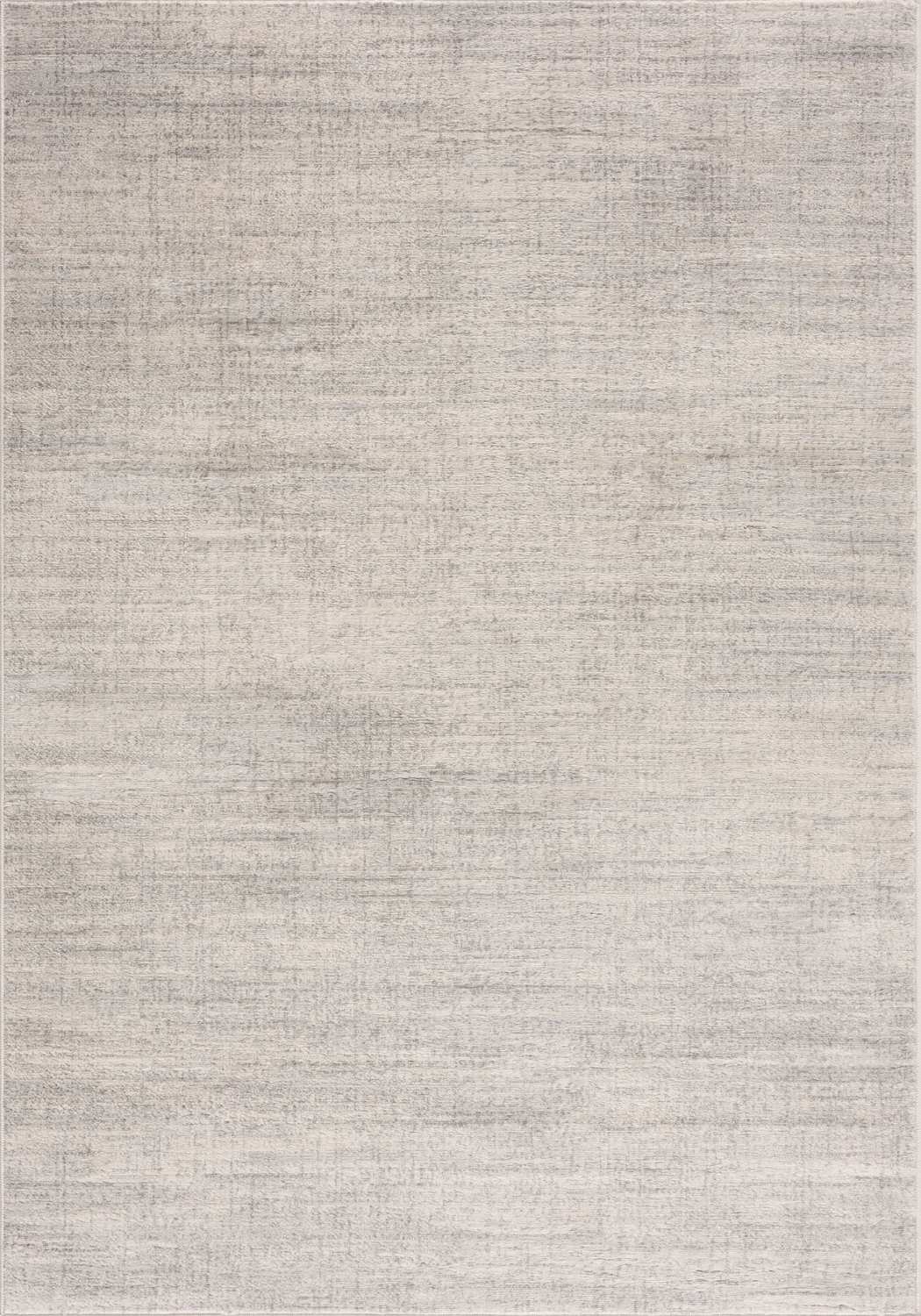
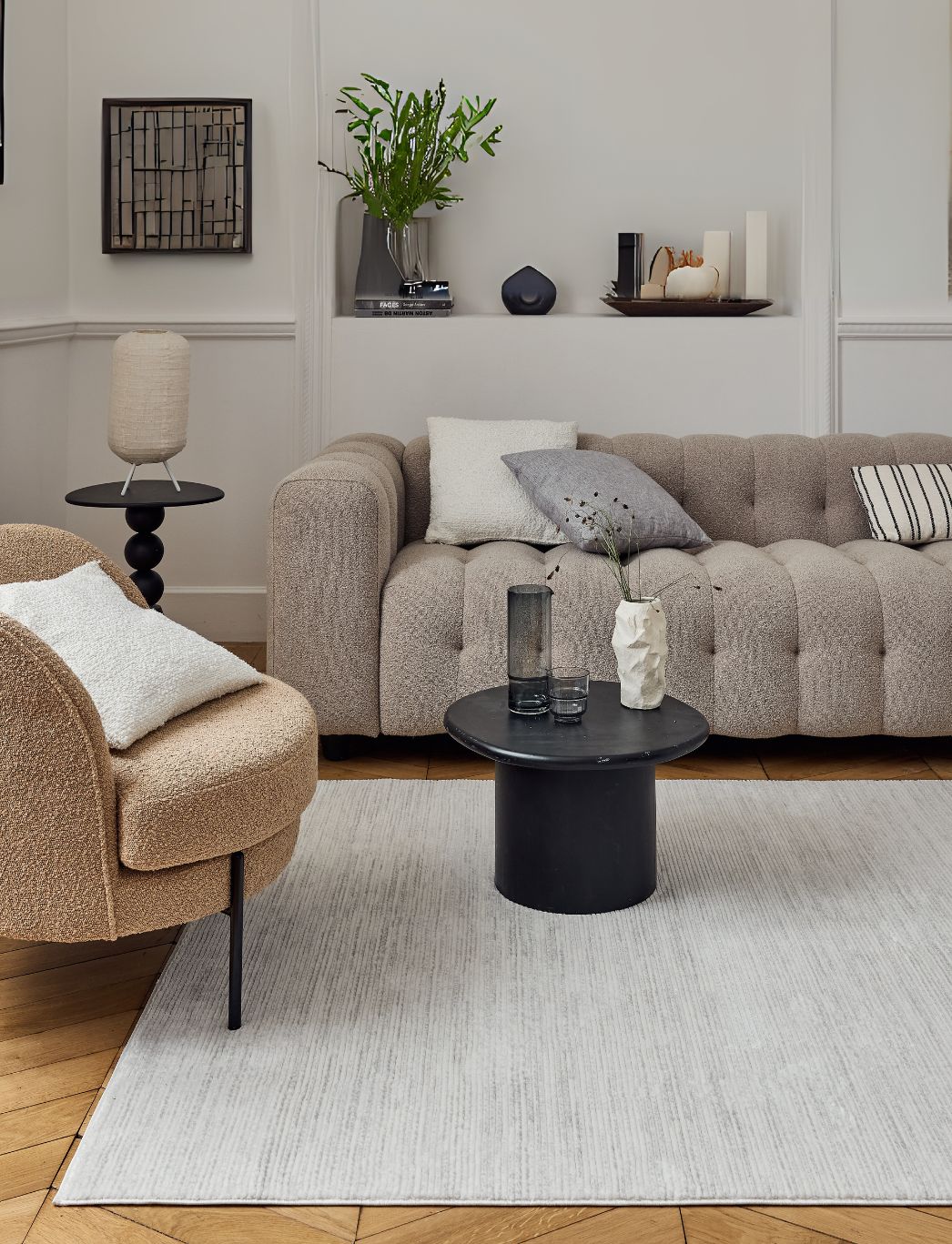

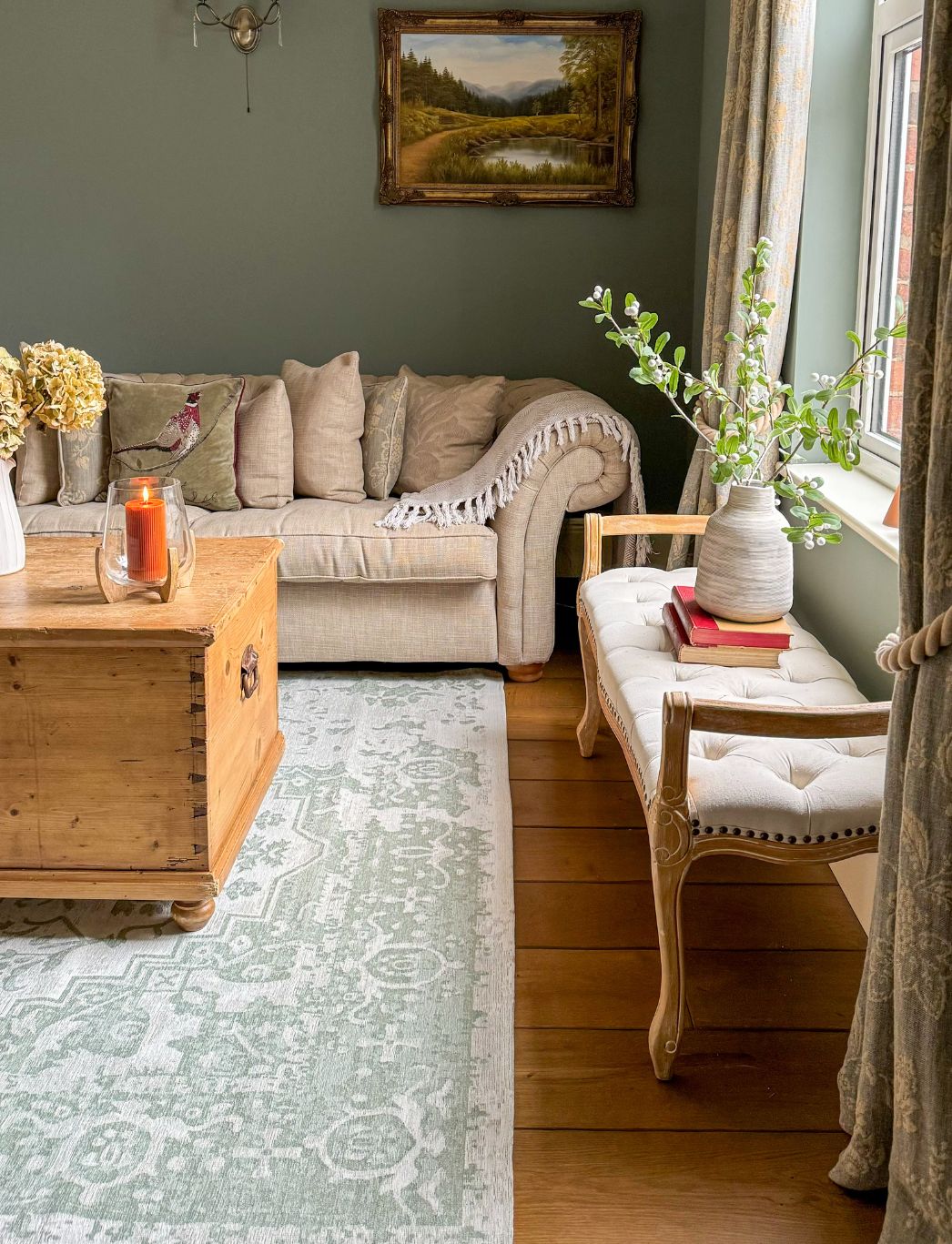
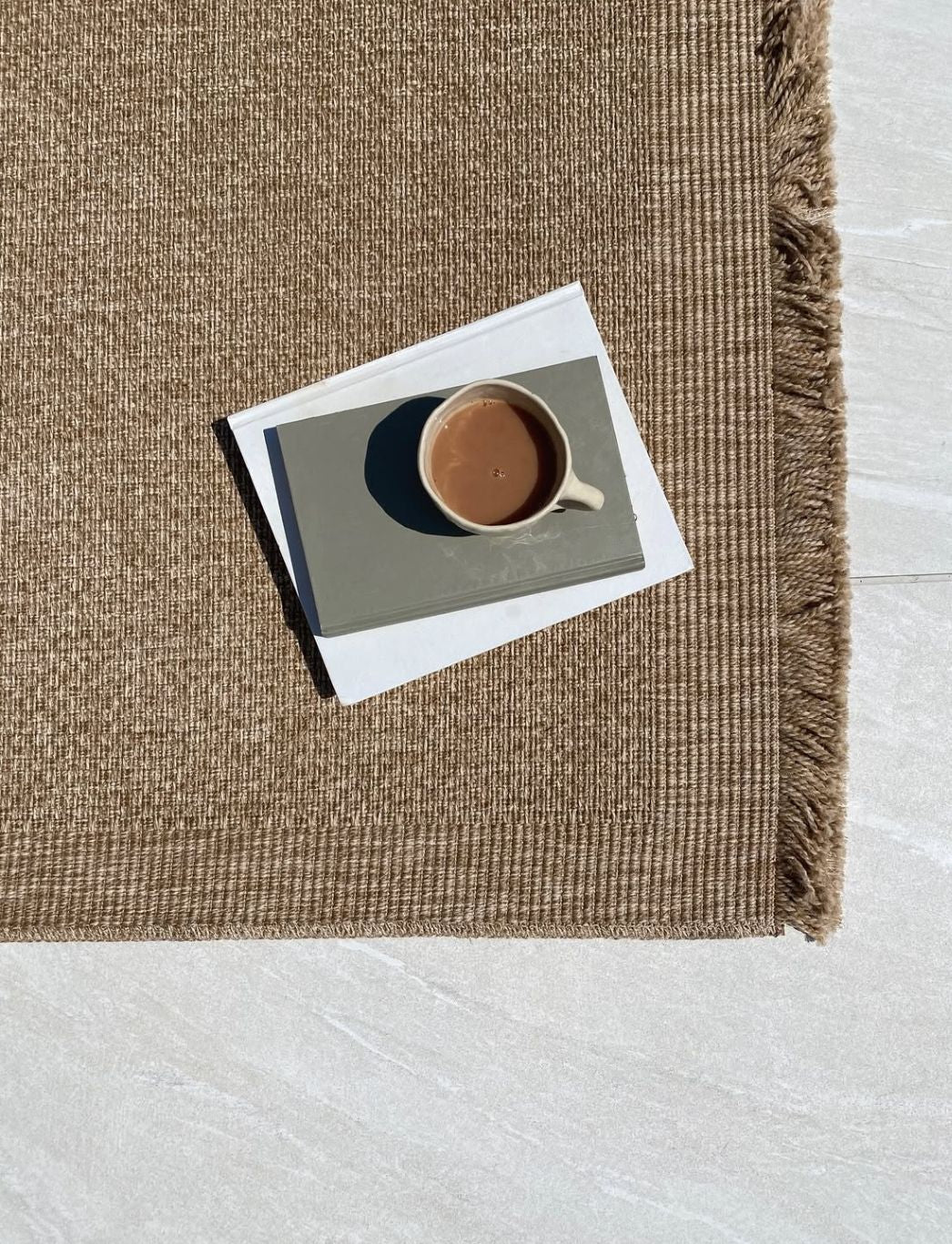
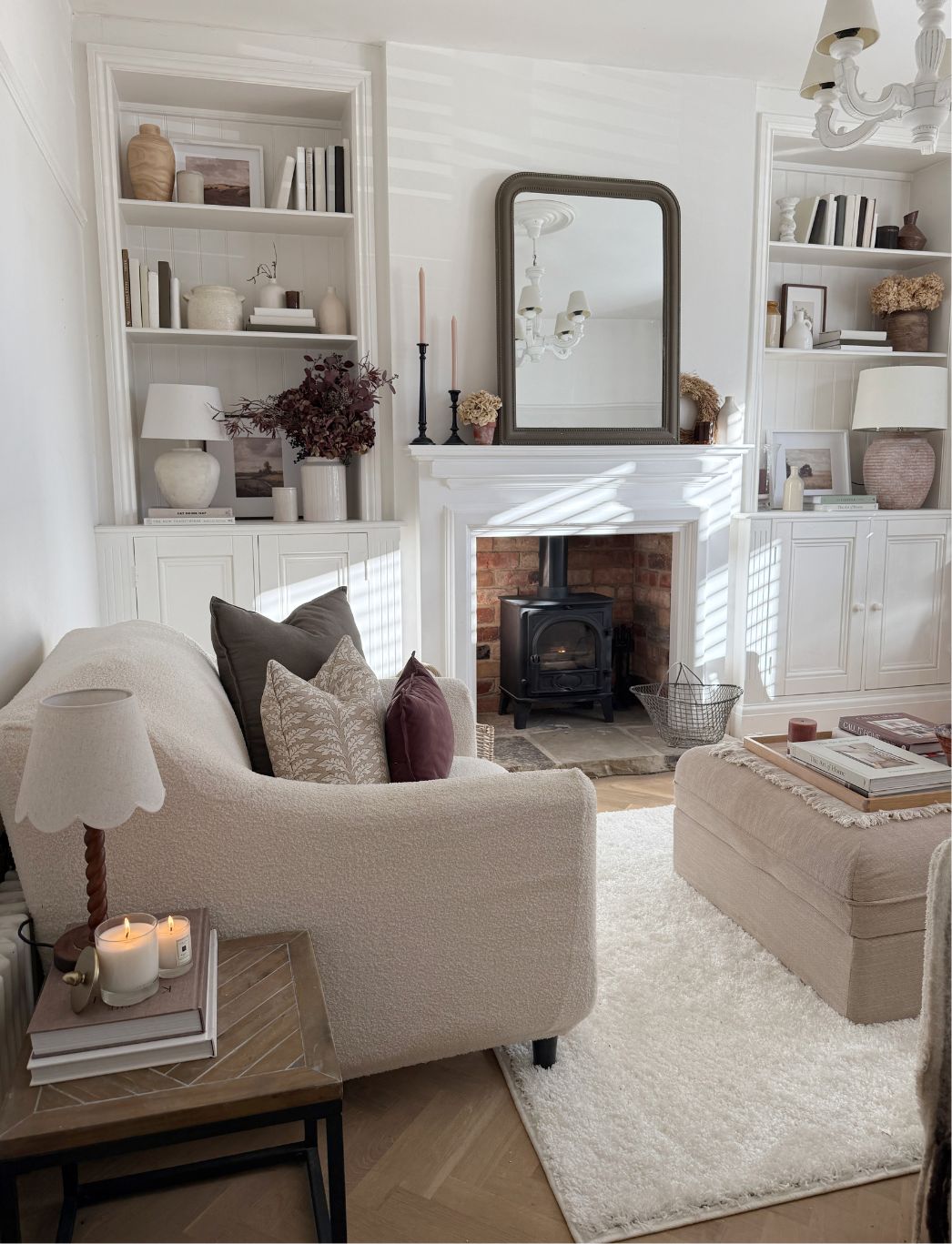
Leave a comment